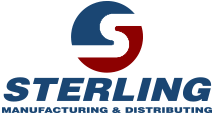Packaging materials in industrial settings are put to the test everyday as they face harsh conditions from soaring summer heat to frigid winter temps, and in between there is the threat of high humidity, water exposure, corrosive chemicals, vibration and heavy impact.
These extreme environments make packaging material that can withstand challenging conditions more crucial than ever. Engineered foam products have emerged as versatile solutions capable of standing up to these inhospitable conditions.
“Packaging foams are used to cushion and protect goods during storage and shipping. These materials are made of either polystyrene, polyurethane, polyethylene, or expanded polyethylene foam, providing numerous properties to the products during handling,” says Fortune Business Insights. “They are lighter than almost any substitute packaging material and have shock absorption and thermal insulation properties during transit.”
This article explores how custom foam solutions are designed, selected, and tested to meet the demanding requirements of extreme industrial applications.
Material Selection: PU, PE or EPS are Most Common
The choice of base material is crucial in determining a foams performance in extreme conditions. Common materials include:
-
- Polyurethane (PU): Offers excellent thermal insulation and impact resistance.
- Polyethylene (PE): Provides good chemical resistance and moisture protection.
- Expanded Polystyrene (EPS): Lightweight with excellent shock-absorption properties, ideal for protective packaging.
Each material has its unique properties, strengths, and weaknesses, making them suitable for different use cases.
Engineers carefully evaluate the properties of each material to select the most suitable option for the intended application.
Density and Cell Structure: Optimizing Foam Properties
When designing foam products for extreme environments, engineers must consider several key factors, including density and foam structure, which can significantly impact its performance:
-
- Higher density foams generally offer better insulation and impact resistance.
- Open-cell structures provide better sound absorption and breathability.
- Closed-cell structures offer superior moisture resistance and buoyancy.
By adjusting these parameters, engineers can optimize foam properties for specific environmental challenges. Lets look at density and cell structure a bit closer:
Density
-
- Weight: Lower density foams are lighter, which can be beneficial in applications where weight reduction is crucial, such as aerospace, automotive, and packaging industries.
- Compression Resistance: Higher-density foams generally exhibit better compression resistance, making them suitable for applications that require the foam to withstand heavy loads, such as cushioning and insulation materials.
- Thermal Conductivity: Lower-density foams often have lower thermal conductivity, making them more effective insulators. However, the relationship between density and thermal conductivity can vary depending on the specific foam type and formulation.
Cell Structure
-
- Open-Cell vs. Closed-Cell and Cell Size:
- Open-Cell: These foams have interconnected pores, allowing for gas exchange and fluid absorption. They are often used in applications where breathability and moisture absorption are important, such as mattresses and filters.
- Closed-Cell: These foams have non-connected pores, providing better resistance to moisture and gas penetration. They are commonly used in applications where insulation, buoyancy, and chemical resistance are required, such as construction, marine, and packaging industries.
- Cell Size: Smaller cell sizes can provide denser, more rigid foams, while larger cell sizes can result in lighter, more flexible foams. Cell size can also influence the foam’s thermal conductivity and acoustic properties.
- Open-Cell vs. Closed-Cell and Cell Size:
By carefully considering the desired properties and application requirements, engineers can select or design foam materials with the appropriate density and cell structure to achieve optimal performance.
Additives and Treatments: Modification to Foam
In addition to material selection and density and cell structure, engineers will also factor in additives and treatments when designing foam products.
To enhance foam performance in extreme conditions, various additives and treatments can be incorporated:
-
- Flame retardants for fire resistance.
- UV stabilizers for outdoor applications.
- Antimicrobial agents for hygiene-sensitive environments.
- Chemical treatments for improved oil and solvent resistance.
- Antioxidants can protect foam from degradation caused by oxidation.
- Colorants can be added to give foam its desired color.
- Crosslinking agents can be added to improve mechanical properties, such as tensile strength and tear resistance.
These modifications allow engineers to create foam products that excel in specific extreme conditions. Factors to Consider When Selecting Additives:
-
- Compatibility: Additives must be compatible with the base foam material to ensure that they do not degrade or interfere with their performance.
- Regulatory Compliance: Additives must comply with relevant regulations and safety standards, especially in industries such as food packaging and healthcare.
- Cost-Effectiveness: The cost of additives should be balanced with the benefits they provide.
- Environmental Impact: The environmental impact of additives should be considered, especially in industries that prioritize sustainability.
By selecting and incorporating appropriate additives and treatments, engineers and designers can create foam products with specific properties and functionalities, meeting the diverse needs of various industries and applications.
Testing and Validation: Validating Performance
Rigorous testing is essential to ensure that engineered foam products can withstand extreme environments. Common tests include:
- Thermal Performance
- Heat resistance testing: Evaluates foam behavior at high temperatures.
- Thermal conductivity measurements: Assesses insulation properties.
- Cryogenic testing: Determines performance in extremely cold conditions.
- Chemical Resistance
- Immersion tests: Measures foam degradation when exposed to various chemicals.
- Permeation testing: Evaluates the foam’s ability to prevent chemical penetration.
- Mechanical Properties
- Compression testing: Assesses the foam’s ability to withstand pressure.
- Impact resistance testing: Evaluates protection against sudden forces.
- Fatigue testing: Determines long-term durability under repeated stress.
- Environmental Factors
- Accelerated weathering: Simulates long-term exposure to UV radiation and moisture
- Salt spray testing: Evaluates corrosion resistance in marine environments
By subjecting foam products to these rigorous tests, engineers can validate their performance and make necessary adjustments to meet specific requirements4.
Custom Engineered Foam Solutions for Specific Industries
Engineered foam products can be designed to meet the unique requirements of various industries by carefully considering factors such as mechanical properties, thermal properties, chemical resistance, density, cell structure, and additives. Here are some examples of how foam products can be tailored for specific industries:
-
- Packaging: The packaging industry cuts across all other industries as foam is designed to provide cushioning and protection for products during shipping and handling. Benefits include:
- Foams with good thermal insulation can protect temperature- sensitive products.
- Shipping costs are reduced due to the lightweight nature of engineered foam.
- Customizable shapes can be designed to fit specific products.
- Packaging: The packaging industry cuts across all other industries as foam is designed to provide cushioning and protection for products during shipping and handling. Benefits include:
-
- Aerospace: In the aerospace industry, engineered foams must withstand extreme temperature fluctuations, low air pressure, and high vibration levels. Custom solutions often include:
- Lightweight, high-performance insulation for aircraft cabins.
- Impact-absorbing materials for cargo protection.
- Flame-retardant foams for safety-critical applications.
- Aerospace: In the aerospace industry, engineered foams must withstand extreme temperature fluctuations, low air pressure, and high vibration levels. Custom solutions often include:
-
- Oil and Gas: The oil and gas sector requires foam products that can endure harsh offshore environments and exposure to corrosive chemicals. Examples include:
- Chemical-resistant gaskets and seals for pipelines.
- Buoyancy modules for subsea equipment.
- Thermal insulation for deep-sea operations.
- Oil and Gas: The oil and gas sector requires foam products that can endure harsh offshore environments and exposure to corrosive chemicals. Examples include:
-
- Automotive: Engineered foams in the automotive industry must provide safety, comfort, and durability. Custom solutions may include:
- Energy-absorbing foams for crash protection.
- Sound-dampening materials for noise reduction.
- High-temperature resistant foams for engine compartments.
- Automotive: Engineered foams in the automotive industry must provide safety, comfort, and durability. Custom solutions may include:
-
- Chemical Processing: In chemical processing plants, foam products must withstand exposure to a wide range of corrosive substances. Applications include:
- Chemical-resistant seals and gaskets.
- Thermal insulation for reactors and storage tanks.
- Spill containment materials.
- Chemical Processing: In chemical processing plants, foam products must withstand exposure to a wide range of corrosive substances. Applications include:
Evolving Field of Engineered Foam
The field of engineered foams is constantly evolving, with new technologies emerging to meet increasingly demanding applications.
Researchers are developing foam materials that can respond to environmental changes, such as:
-
- Shape-memory foams that return to their original form after compression.
- Self-healing foams that can repair minor damage autonomously.
- Piezoelectric foams that generate electricity when compressed.
By incorporating nanoparticles into foam structures, engineers can create materials with enhanced properties:
-
- Improved thermal conductivity for better insulation.
- Increased mechanical strength without added weight.
- Enhanced chemical resistance for extreme environments.
As sustainability becomes increasingly important, researchers are developing foam materials from renewable resources:
-
- Soy-based polyurethane foams.
- Cellulose-derived foam products.
- Biodegradable foams for environmentally sensitive applications.
These innovations are expanding the capabilities of engineered foams, allowing them to meet even more challenging environmental demands
Sterling: Your Go-To Engineered Foam Partner
Engineered foam products have become indispensable in industries facing extreme environmental challenges.
Through careful material selection, innovative design, and rigorous testing, custom foam solutions can be created to withstand heat, cold, chemicals, and other harsh conditions.
As technology continues to advance, we can expect even more impressive foam products capable of thriving in the most demanding environments, pushing the boundaries of what’s possible in industrial applications.
For businesses in Houston, Texas, and beyond seeking expert foam packaging and custom foam fabrication services, Sterling Manufacturing is your go-to partner.
Sterling Manufacturing, with extensive experience in creating tailored foam solutions for a wide array of applications across numerous industries, can help you develop the perfect engineered foam product to meet your extreme environment challenges.
Contact Sterling Manufacturing today to discuss your custom foam needs and discover how our expertise can elevate your industrial packaging and protection solutions.


